Abstract
Tubi is a playful installation that aims to make visitors reconnect with their inner child by playing with a colourful interactive playground structure inspired by AI-generated images of bizarre playground designs.
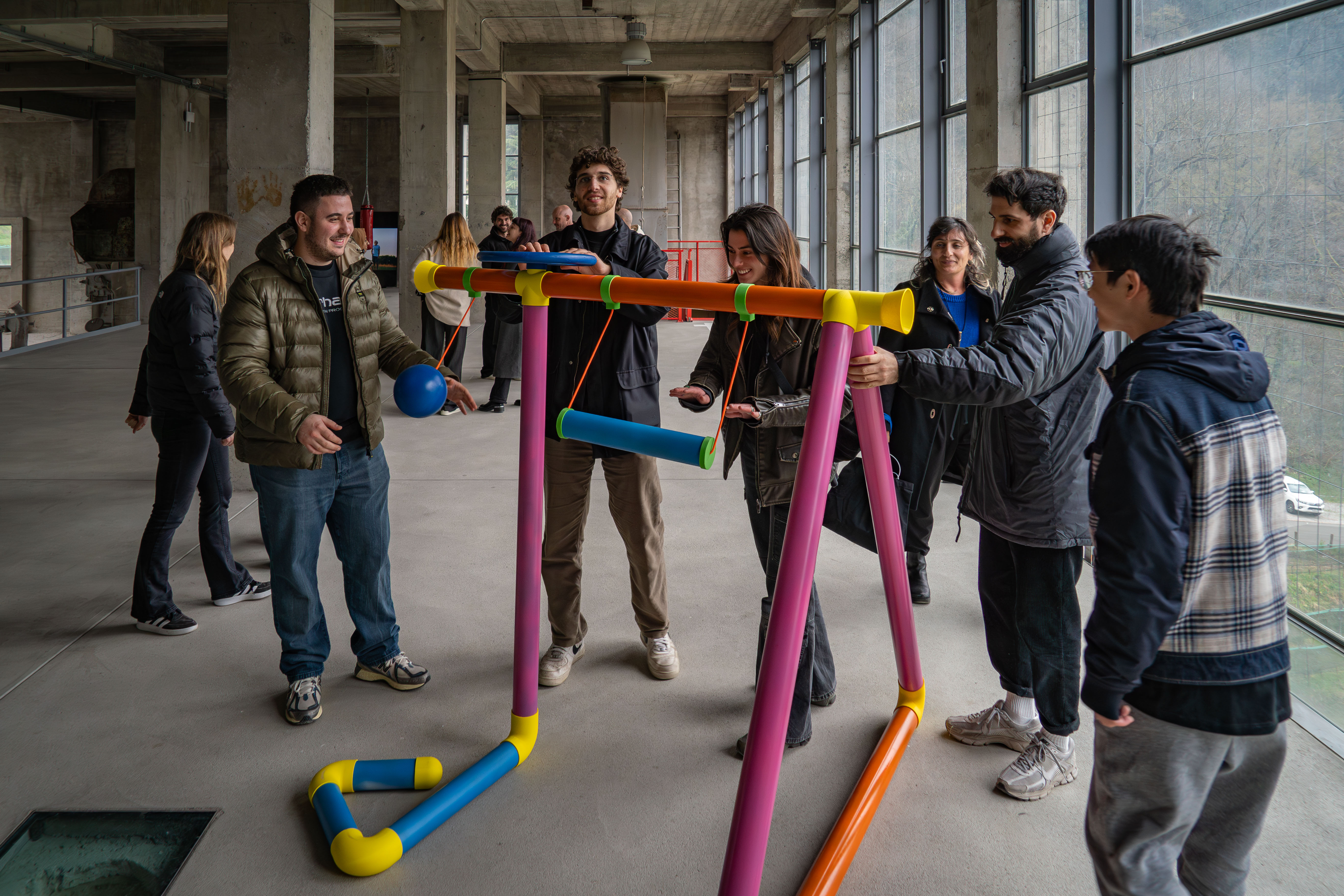
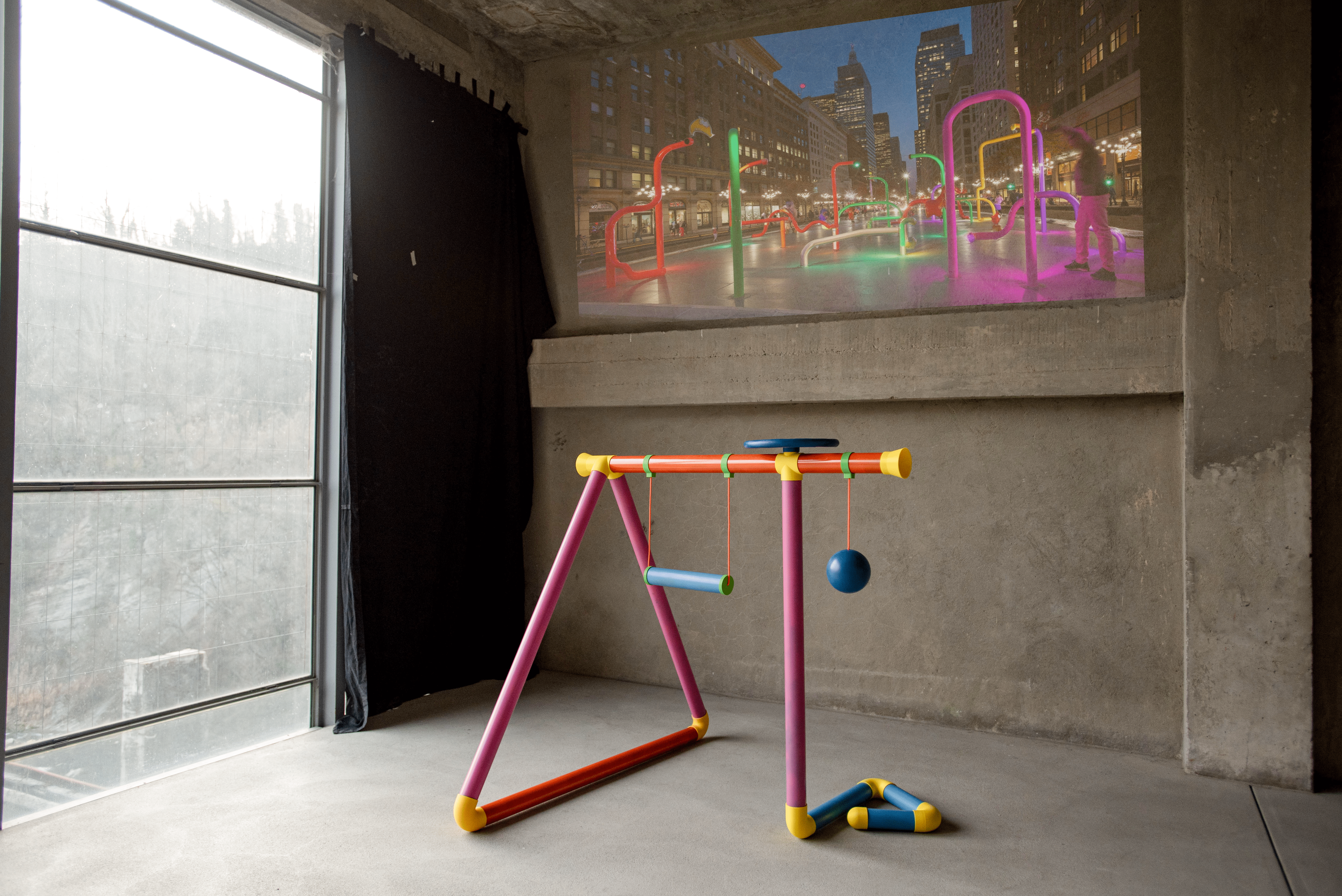
Tubi is a playful installation that aims to make visitors reconnect with their inner child by playing with a colourful interactive playground structure inspired by AI-generated images of bizarre playground designs.

Explore new forms of interaction by creating or modifying sensor-equipped objects that control digital environments and communicate in real time, enhancing user engagement with photographic archives displayed in museums or galleries.
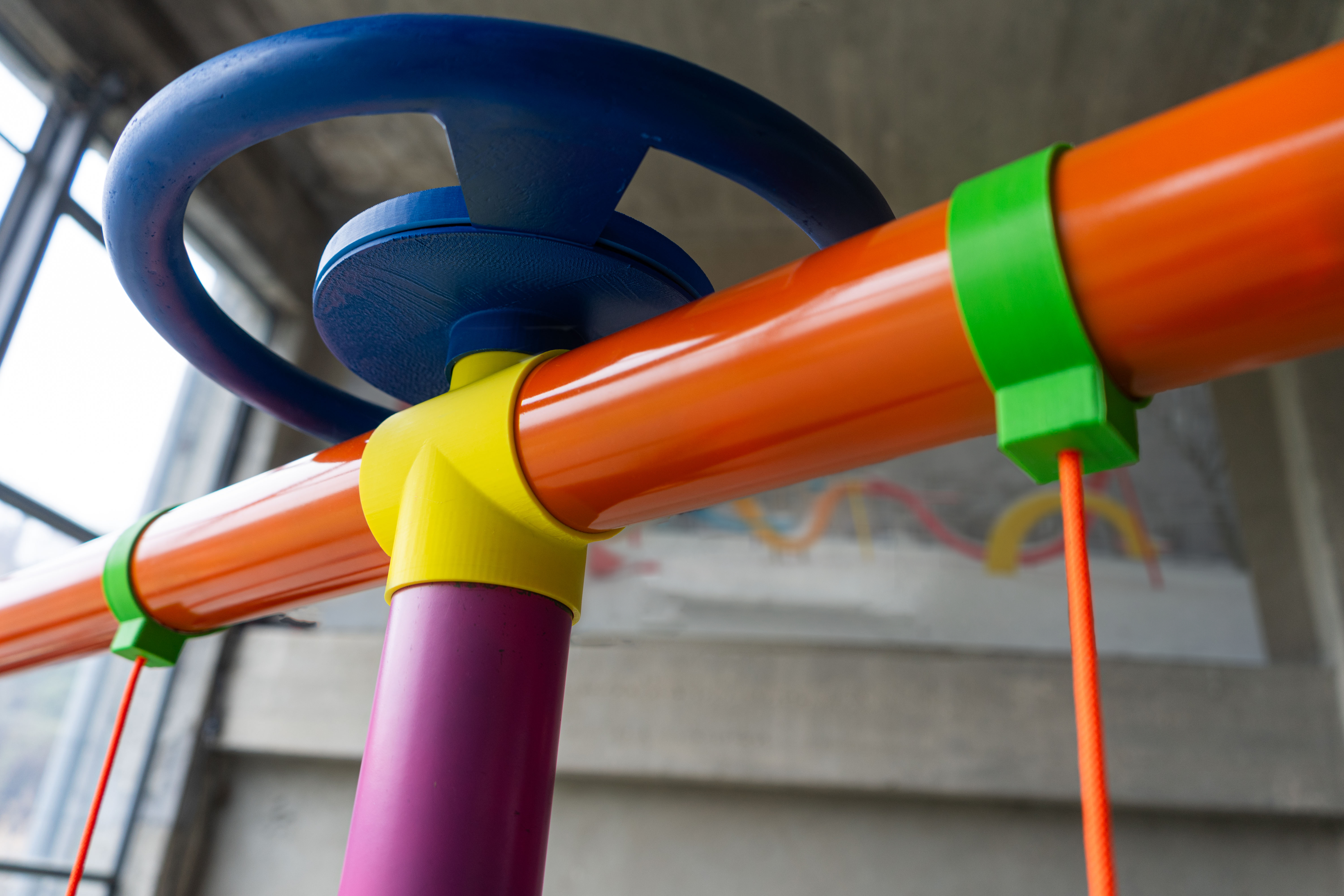
The installation transforms visitors into active participants, inviting them to play. The interaction is deliberately light-hearted and joyful, echoing the playful nature of the structure itself: a surreal, AI-inspired playground.
By embedding smartphones as sensors inside physical components like swings, wheels, and spheres, we fused intuitive, tactile movement with real-time digital feedback.


The playful interactions not only allows users to manipulate photographic archives dynamically, but also evokes a sense of wonder and nostalgia, encouraging visitors to reconnect with their inner child. The result is an emotionally engaging experience where archives are not just observed, but explored, distorted, and inhabited through joyful, embodied interaction. Play becomes a bridge between memory and imagination, making heritage feel accessible, vibrant, and alive.

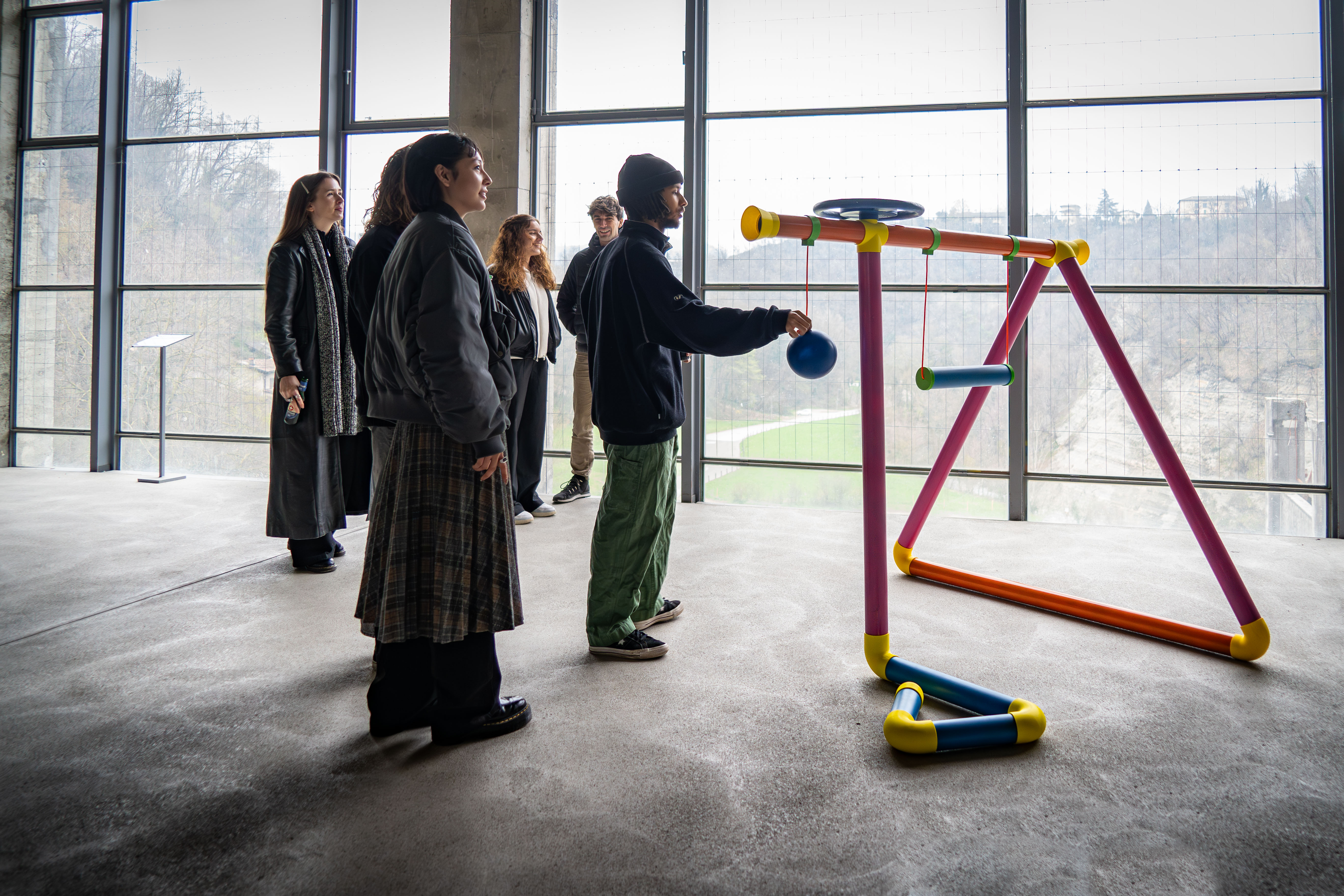
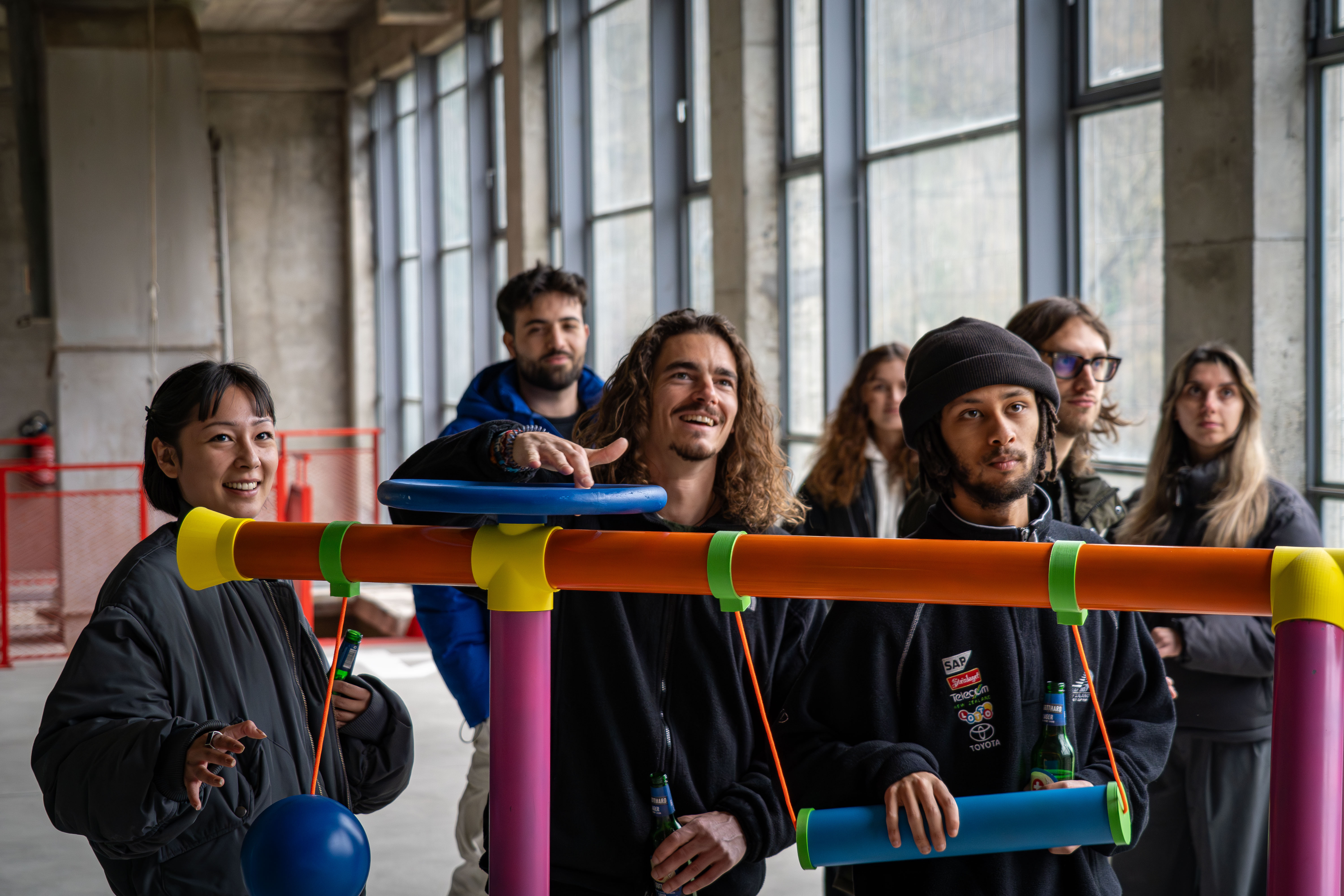
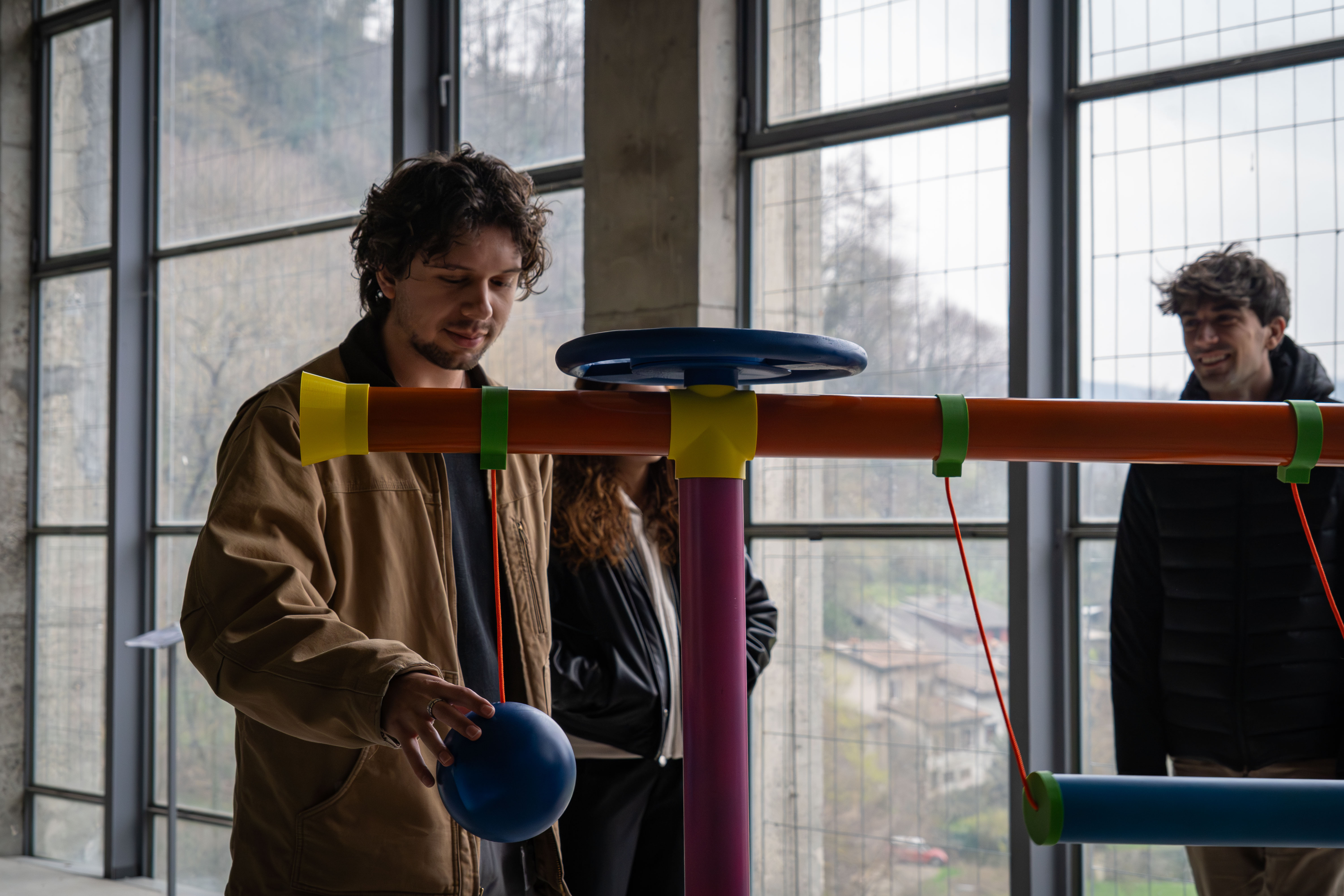

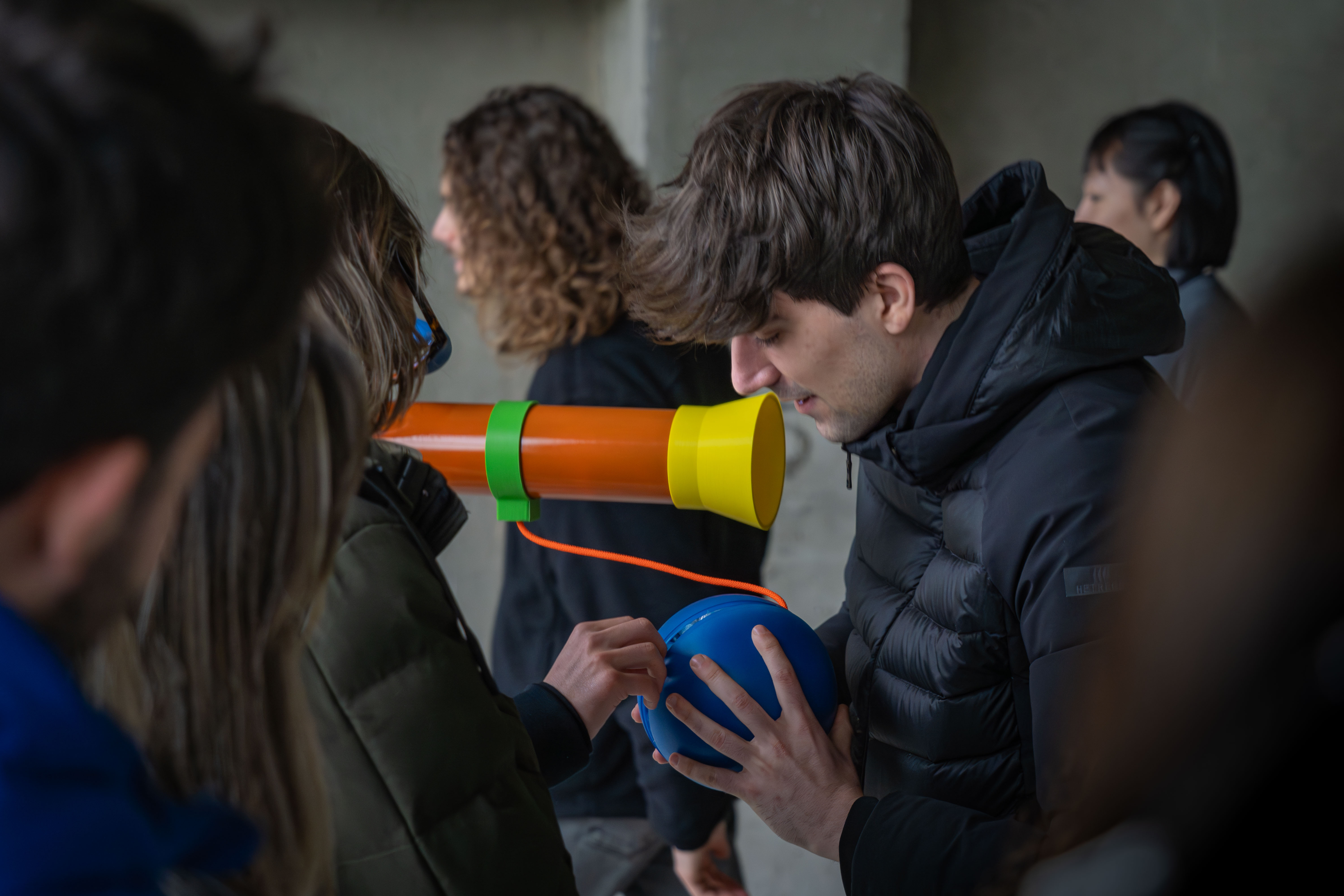
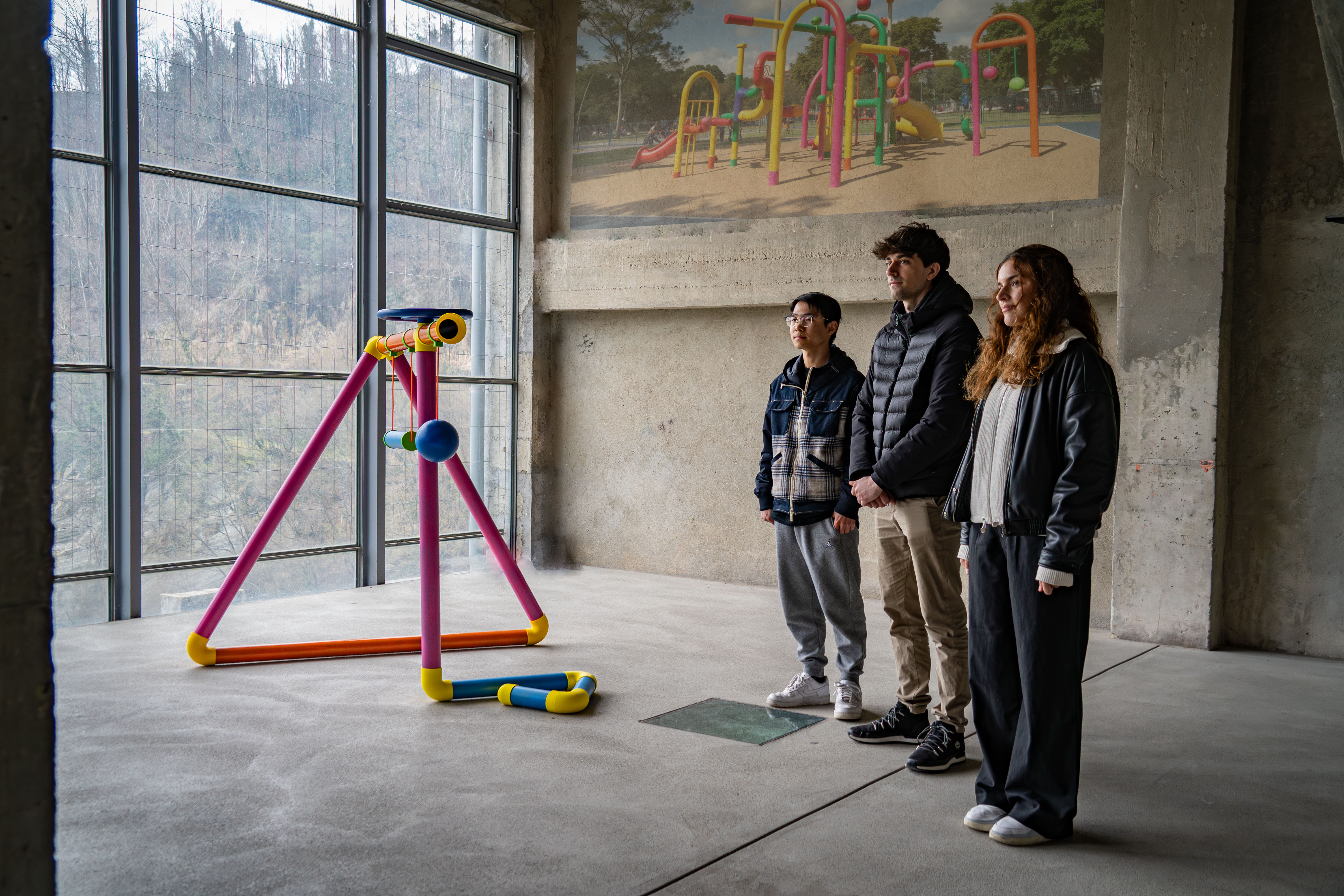
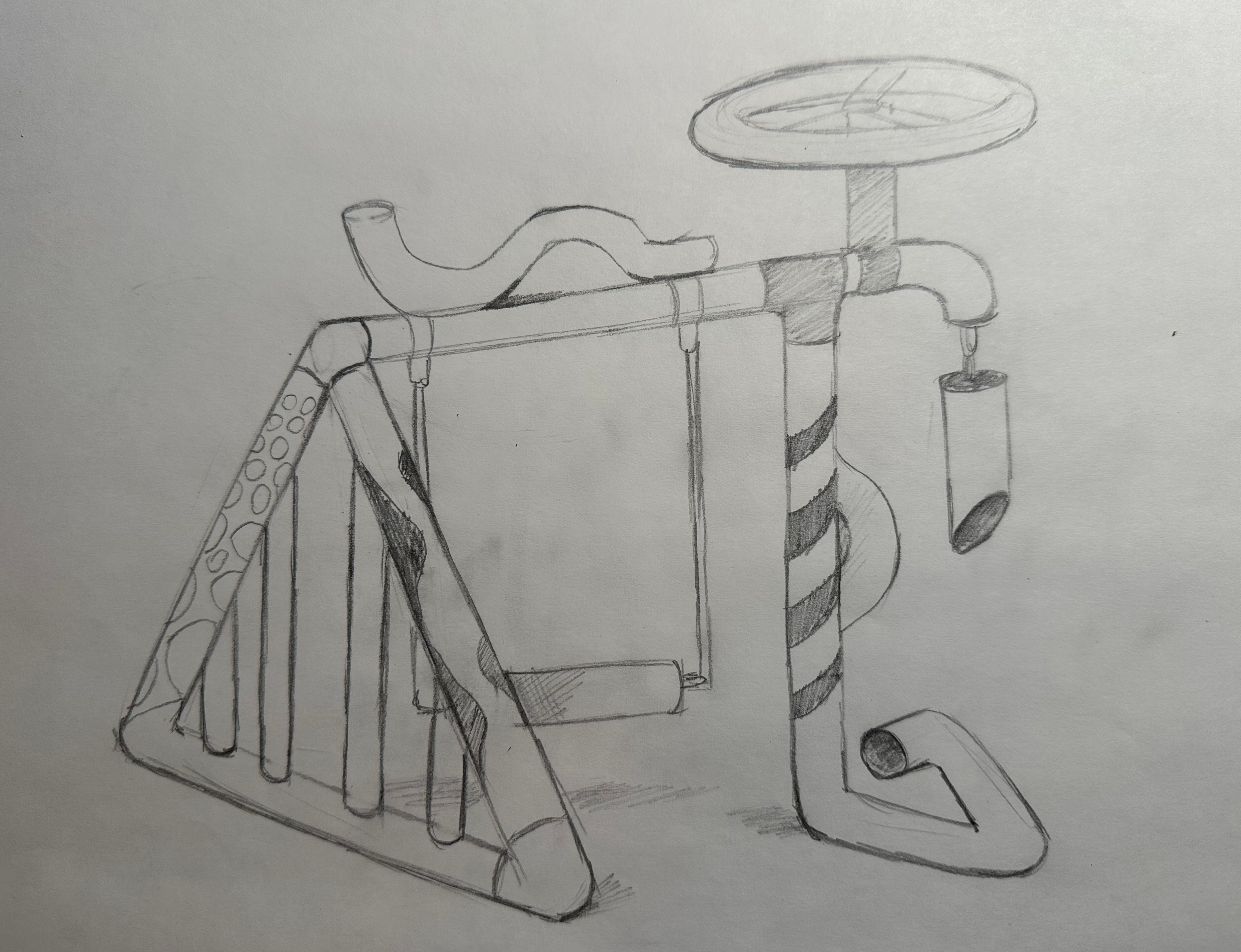
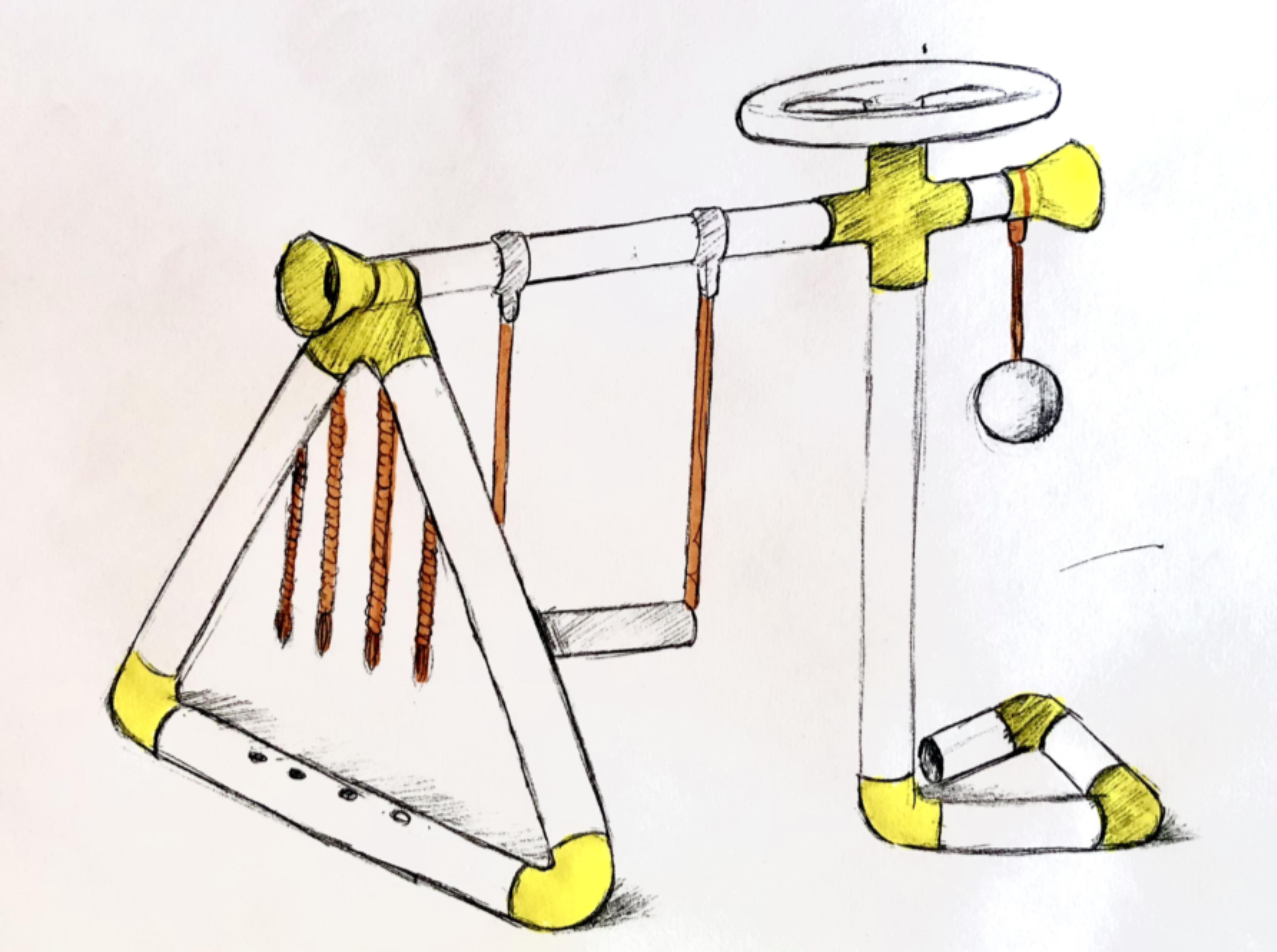
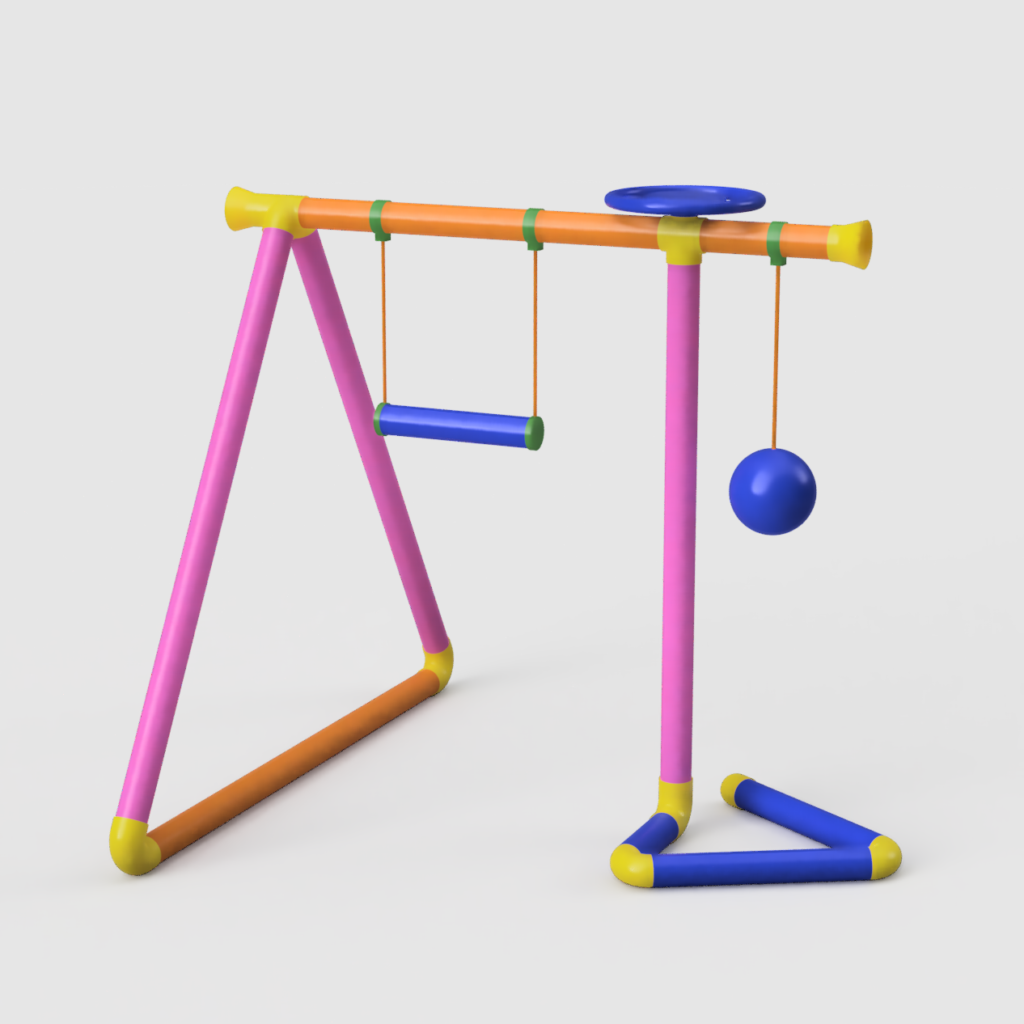
Render of the structure in Fusion360
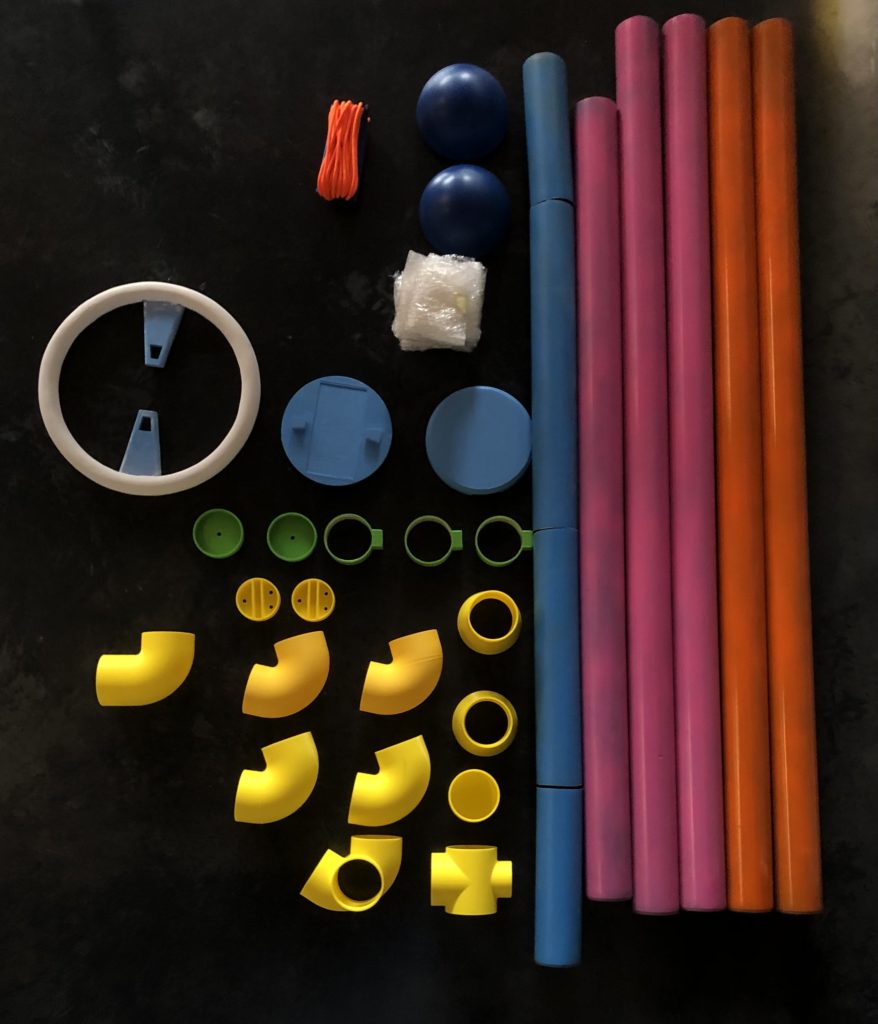
Inventory
Key components:
The projection system of the installation dynamically changes images and audio based on smartphone sensor data.
It uses WebSockets to receive motion data and updates the projected visuals in real time.
The projection is a web-based full-screen interface built with HTML/JavaScript.
The first step in the image selection process involved choosing real photographs of intriguing playground designs featuring unusual shapes and vibrant colors. We curated a collection of approximately 40 images, which were then used to train an LLM model on Replicate, the AI tool we employed to generate the images.
Prompt: "Create an image of a colorful playground structure with tube shapes, in the style of @TOKPLAYGROUND. The image must be realistic, yet the structure should have a very bizarre shape. No people should be present. The structure is located …"
From the AI-generated images, we selected those that struck a balance between realism and surrealism – maintaining lifelike qualities while showcasing bizarre shapes, striking colors and unconventional placements.
The final archive consists of 78 images, a selection of which is presented below.
Full documentation available here.